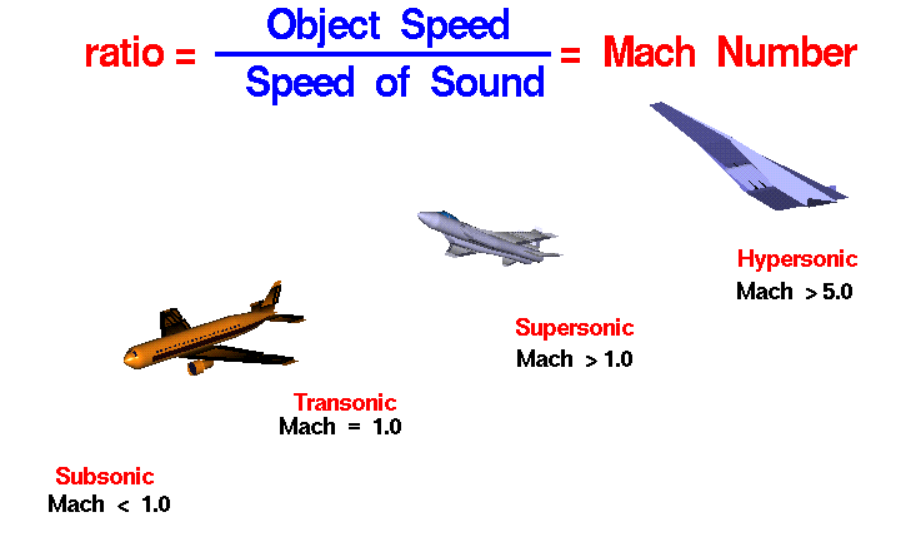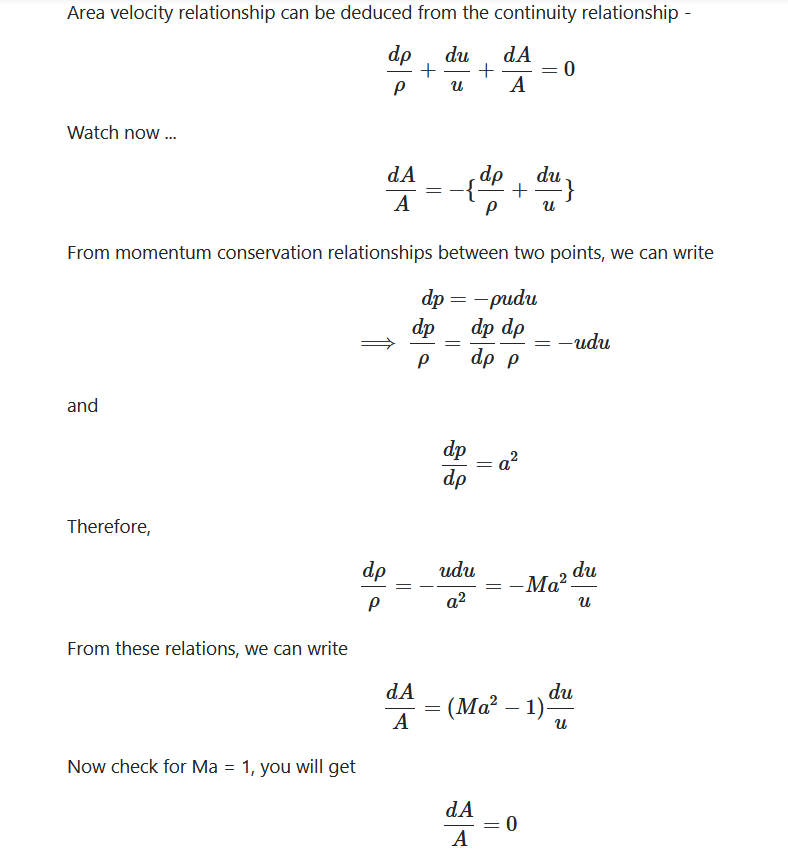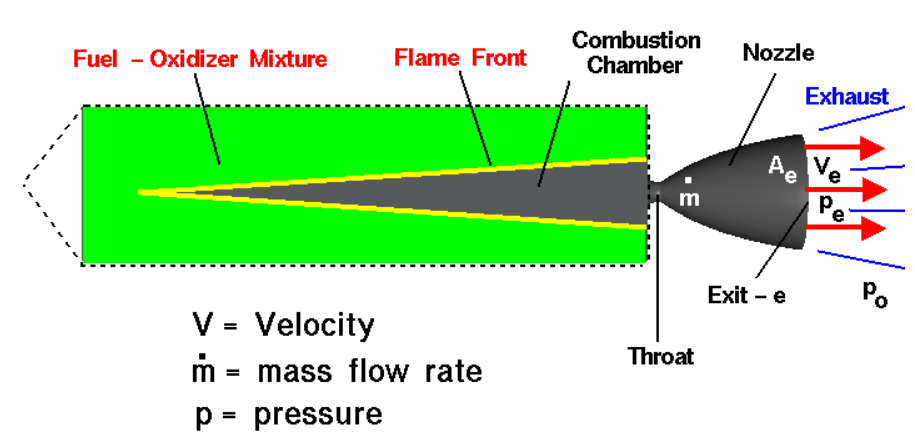quick menu
Tiuri/thruster
Tristan/maths
TRISTAN'S
PARADISE
home page
Sebastiaan/canset
hackathon/
gezamelijke dingen
resources
Rocket thrust equations
Let’s take a look at what these rocket thrust equations mean exactly.
Thrust is the force of the rocket on the environment, pointing downwards. To be more precise, it is the force caused by the transport of momentum through the exhaust fumes. Newton’s Third Law makes sure that this same force is applied on the rocket, pointing upwards. The force is caused by two parts: the actual exiting of the exhaust fumes out of the rocket (mass flow rate * exit velocity), and pressure difference between the fumes and the atmosphere, which is enacted on the boundary between the rocket and the atmosphere.
The mass flow rate is determined by the bottleneck of the nozzle called the throat, which you can see in the top-right. As you can see, mass flow rate increases with throat area, total pressure (pressure in the combustion chamber), and decreases with the square root of the total temperature (temperature in the combustion chamber). The gamma factor is the ratio of specific heats (c_p / c_v).
The exit mach is the ratio of exit and throat area of the nozzle, and this determines the Mach number Me, which we can then use to calculate the exit temperature and exit pressure.
In order to calculate the exit velocity we can use the equation for the speed of sound.

Mach Number
Before expanding on the thrust equation, let's take a quick look at the Mach Number. This is defined as the ratio between the relevant object's speed and the speed of sound.
As an object approached transonic speeds, much of the energy of the object goes into compressing the air in front of it, locally changing its density. It is exactly this effect for which the Mach number is relevant.
Compressibility effects around Mach 1 cause a much larger drag force on the object, which is the reason why aircraft do not approach it.
From Mach 1 onward, compressibility effects stay relevant. From Mach 3 onward (high supersonic speeds), aerodynamic heating becomes very important for aircraft design.
From Mach 5 onward (hypersonic speeds), the energy of the aircraft starts exciting the bonds between nitrogen and oxygen molecules, which also needs to be taken account of in the force equations.
For supersonic and hypersonic speeds, small disturbances travel downstream in a cone, with the sine of the angle of the cone equal to the inverse of the Mach number.

Coming back to our fluid dynamics in the rocket nozzle, there is a very interesting occurrence when it comes to the Mach number.
See the derivation on the left, which derives from the continuity relationship between fluid density, velocity and flow area.
Used here is that the speed of sound squared (a^2) is equal to the derivative of pressure to density d P/d rho, which is easily derived.
Furthermore, they substitute u / a with the Mach number Ma in this example.
We see now, that the MAXIMUM or MINIMUM of an area curve determines the place where Mach = 1.
Therefore, at the nozzle throat, we have M = 1! This is by definition!

We are planning to build a rocket engine composed of solid fuel, as it is simple and definitely capable of reaching our goal of 500 meters altitude.
A cylinder is filled with a fuel-oxidizer mixture. A hole in this cylinder serves as the initial combustion chamber, but as combustion takes place on the surface of the propellant, a flame front develops through the cylinder, expanding the combustion chamber and accelerating the reaction. The flow can be accelerated by a nozzle, as shown in the previous parts.
The hole in the cylinder can be designed in varying ways, leading to varying thrust-time profiles.
Solid Rocket Engine
General thrust equations
Hier komt nog meer coole shit